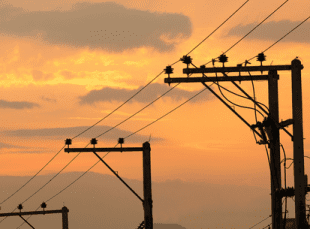The rule-maker for Australian electricity markets has finally released proposed changes that would encourage demand management schemes such as energy efficiency and battery storage to be adopted by network operators, but it may come too late to head off another major spree of expensive grid upgrades in the meantime.
The Australian Energy Market Commission, which sets policy for the electricity markets, has released draft rules that it says will encourage network operators to find the lower cost solutions to managing their systems.
You’d think the network operators would be doing that anyway, but the nature of the regulatory system has encouraged networks to build bigger grids becaue the more assets they own, the higher the regulated returns.
This has led to some absurd situations where even remote towns are serviced by the traditional poles and wires, where a renewable-based local micro grid might be a much cheaper and more efficient option, not to mention cleaner.
This has led to accusations that one third of the $45 billion grid expenditure allowed in the last five year period might not have been necessary. Those costs have been the biggest cause of soaring electricity bills throughout the country.
The changes, however, have been a long time coming, and further delays may mean that it misses the next regulatory period altogether.
The AEMC first identified the problem in 2012, but has taken three years to come up with a draft proposal. It does not expect it to be finalised until Decevember, 2016, after the next five year regulatory periods and expenditures are set.
“That is not good enough,” said Chris Dunstan, from the Institute of Sustainable Future, a critic of excess expenditure on the network.
Dunstan wrote in March that the AEMC itself has estimated that “Demand management” – where a power company invests in helping consumers save energy or reduce demand, rather than building more capacity in the form of power stations, power lines and substations – could save consumers between A$4 billion and A$12 billion, or cuts to annual household bills of up to $500.
Dunstan said failure to act would likely cause fixed charges for network services to rise, and variable charges for energy to fall, creating another distortion in the market.
“There will be fewer incentives to support energy efficiency, peak load management and local generation,” he wrote at the time. “This will give consumers less control over their energy bills and make energy efficiency, solar panels and batteries less attractive.
“It will lock Australia into an outmoded, centralised model of electricity generation, at a time when technology and market trends all point towards more decentralised energy.”
The Total Environment Centre, the consumer advocacy group that has pushed the changes, says it was happy with the proposals, but concerned about the potential delays, and the fact that it could miss the next regulatory re-set.
Energy markets advocate Mark Byrne said the TEC is happy that the Australian Energy Regulator, which sets the revenue allowances for the networks, will be required to design a demand management incentive scheme (DMIS) and a separate innovation allowance (DMIA) mechanism.
He said it was the first time a consumer group has got largely what it asked for in a rule change request.
But the TEC still has concerns about the amount of discretion at the AER’s disposal, and the fact that the AER will not be required to publish the new scheme until December 2016.
That suggested that it won’t be implemented until the next round of revenue determinations in 2019, even though the AER flagged possible transitional rules in its NSW draft determination.
“When eventually implemented this reform should create a significantly greater incentive for networks to invest in demand management rather than capex,” Byrne said.
“But the AER’s discretion and the long timeframe could mean it’s a case of “Lord, give me demand management, but not yet…”











